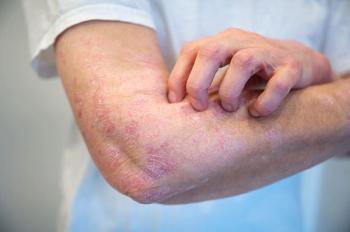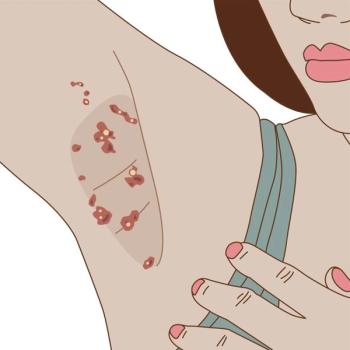
Cutaneous T-Cell Lymphoma
Three months ago, a 50-year-old man who was otherwise in good health noticed a hard, round nodule on his left arm. Within 2 months, similar nodules appeared all over his trunk, head, arms, and legs. The reddish purple lesions, less than 2 cm in diameter, were painless and slightly pruritic.
Three months ago, a 50-year-old man who was otherwise in good health noticed a hard, round nodule on his left arm. Within 2 months, similar nodules appeared all over his trunk, head, arms, and legs. The reddish purple lesions, less than 2 cm in diameter, were painless and slightly pruritic.
The patient was hospitalized, at which time neither lymphadenopathy nor organomegaly was noted. Results of a complete blood cell count, biochemical studies, and urinalysis were normal, and an ECG, a chest film, and CT studies of the thorax and abdomen revealed no abnormalities. Serologic tests were negative for hepatitis B and C viruses, Epstein-Barr virus, cytomegalovirus, HIV, human T-cell leukemia/lymphoma-1 and -2 viruses, rickettsiae, and Treponema pallidum. Biopsy results of bone marrow aspirate were inconclusive.
The diagnosis was obtained from histopathologic examination of a skin biopsy specimen: high-grade cutaneous T-cell lymphoma. The patient was placed on a chemotherapy regimen consisting of cyclophosphamide, doxorubicin, vincristine, and prednisone (CHOP), and a remarkable regression of the skin lesions was evident after 40 days.
This case was reported by Drs Nicholas Pritsivelis, Haralampos Milionis, and Moses Elisaf of Ioannina, Greece.
Newsletter
Enhance your clinical practice with the Patient Care newsletter, offering the latest evidence-based guidelines, diagnostic insights, and treatment strategies for primary care physicians.


